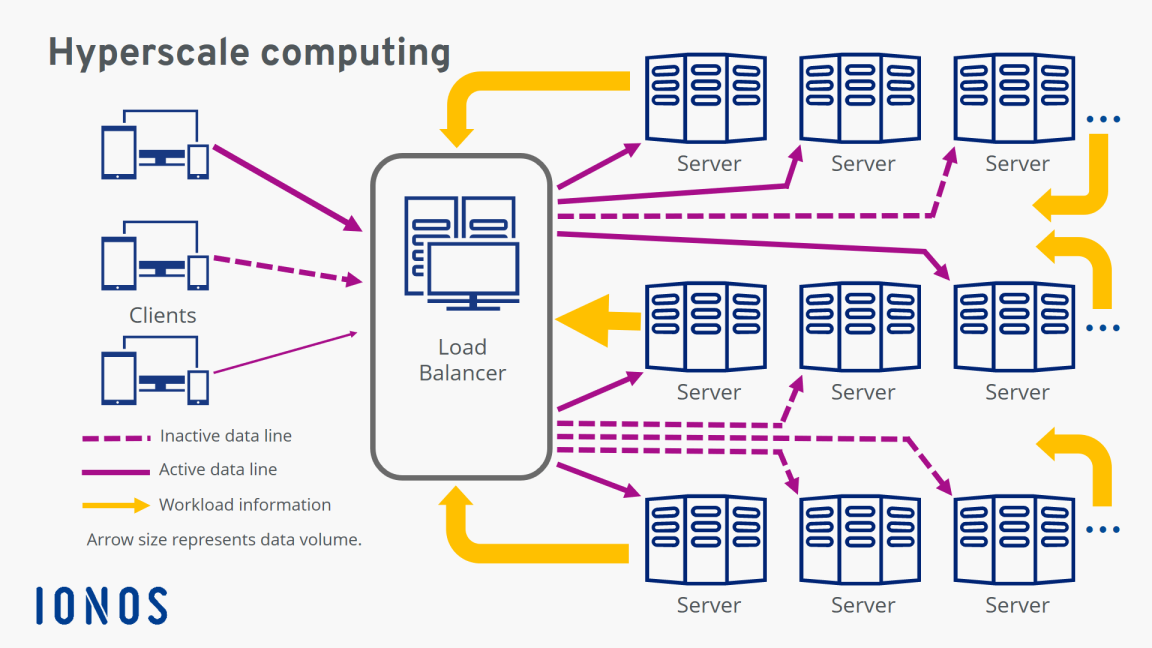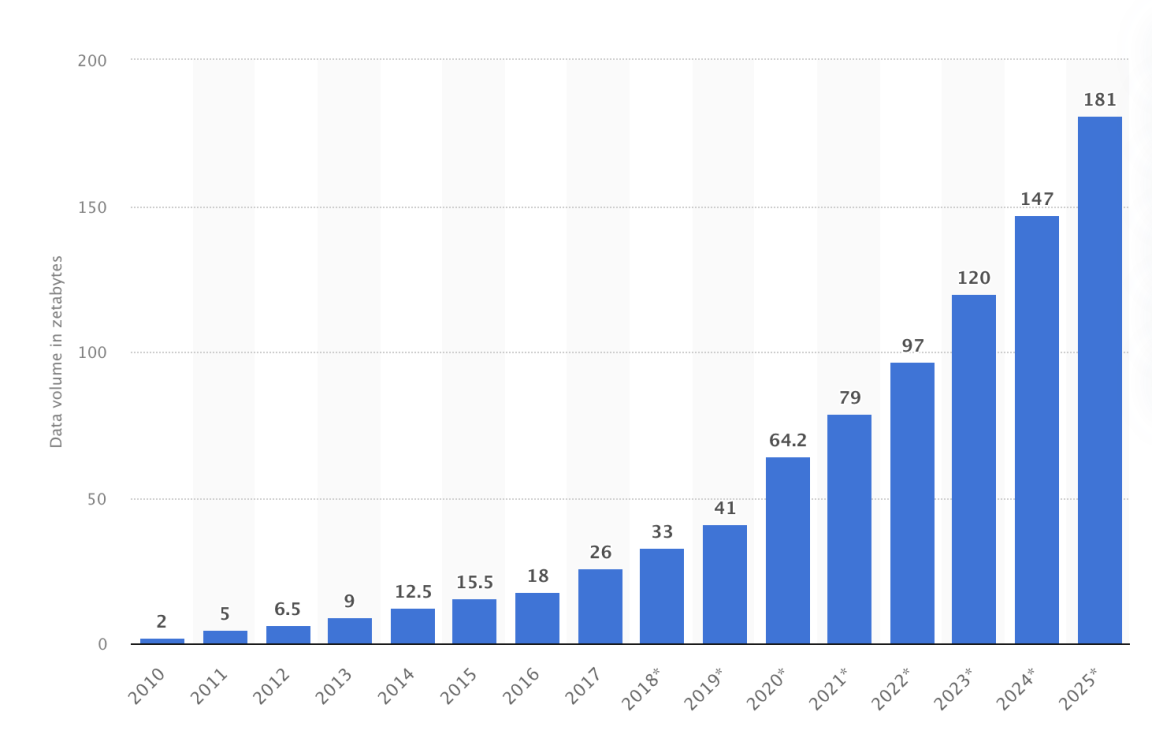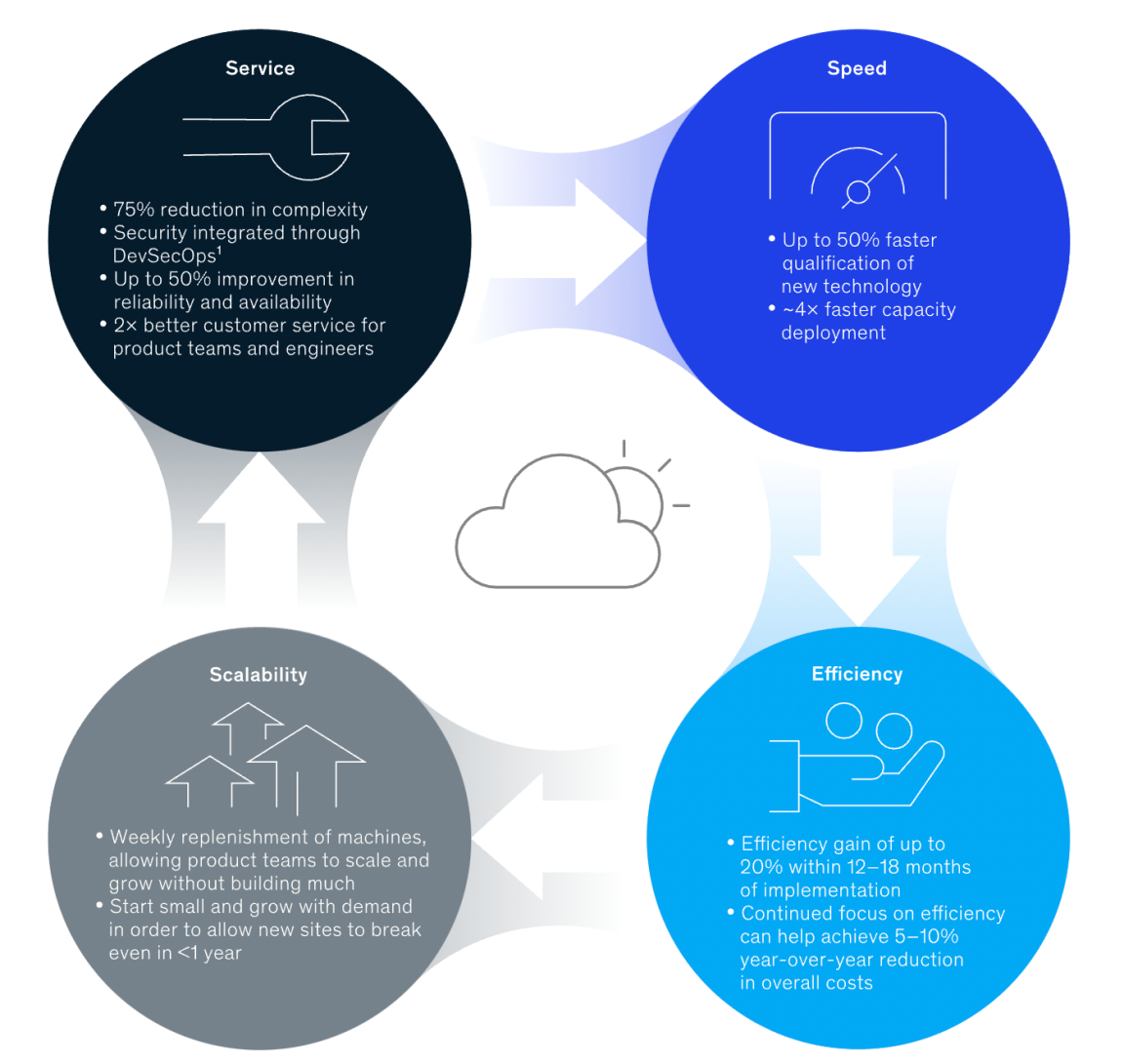What are Hyperscalers and How to Choose a Vendor
Here we’ll discuss the role that hyperscalers play in digital transformation, different kinds of hyperscalers, and how to choose a vendor.

Nov 12, 2021
SHARE
Hyperscalers are a critical part of digital transformation.
Here, we’ll discuss what digital transformation is, the role hyperscalers play, the different kinds of hyperscalers that are available to businesses in need of digital transformation today, and how to choose the best vendor for your enterprise.
Digital Transformation: Roles vs. Goals
Despite it now being essential to survive in today’s (and tomorrow’s) business environment, there’s a lot of confusion around what digital transformation (we’ll call it “DT”, not to be confused with Dennis Thankachan) actually is. That said, DT is a verb, not a noun, meaning it is a process—a means to an end. Specific to the enterprise level, DT is the process of evolving a company's technologically to improve performance and prepare it to sustain change in the long term.
The breakneck speed at which the business world embraced digital work in the wake of COVID-19 compounded a lot of this confusion. Seemingly overnight, business owners were figuring out how to support remote and hybrid offices and, with them, big-time adoption of digital communication channels like email, interactive voice response (IVR), and video conferencing.
The ensuing operational whiplash certainly left everyone feeling digitally transformed. But heavily relying on digital to do business is not the same as wet-wiring it into your operational DNA. And, based on the specifics of your company, end-users, available technologies, and budget, a digital transformation strategy is what guides this digital transformation process to its desired end.
A good strategy is what makes the difference here, as it should clearly identify the endgame of this transformative process, enacting:
A flexible, secure infrastructure
Data mastery
A digitally savvy, open talent network
Ecosystem engagement
Intelligent workflows
Unified customer experience
Business model adaptability
Many different avenues are available to achieve these aspects of digital transformation. And the need for both flexible, secure infrastructures and business model adaptability is where hyperscalers specifically come into play.
How Hyperscalers Move Digital Transformation Forward
Being able to adapt and scale isn’t helpful if it can’t happen fast enough to make a difference. As consumers increasingly adopt (and adapt) to digital channels, their expectations with regards to site speed, stability, and delivery times are increasing as well. But network infrastructure has never been known for being quick and nimble—especially due to the traditional problems involved in increasing network performance in a cost-effective way to handle varying demands. That’s where hyperscalers can help.
Hyperscale refers to a specific way that servers are grouped to form a network to improve the performance they provide. Traditionally, a network could be improved through vertical scaling, which involves boosting the performance of the servers themselves. This could mean adding more memory, better processors, or faster hard drives. But there are technical and budgetary limitations to vertical scaling. And the ebb and flow of network demand can render the costs of vertical scaling prohibitive.
In contrast to this legacy infrastructure, hyperscale computing scales horizontally. Servers that are designed to play nice with one another are daisy-chained and connected to a load balancer. As requests come into the hyperscale system, the load balancer passes the requests to whichever servers have the most capacity at that moment.

Source: https://www.ionos.com/digitalguide/server/know-how/what-is-hyperscale/
As demand on the network shifts, the load balancer constantly re-allocates resources, even switching servers on and off as they’re needed. And there are significant benefits to hyperscaled servers:
The limitations of vertical scaling are avoided—hyperscale cloud services can adapt to market changes quickly and cost-effectively. By linking servers, the network is inherently redundant, increasing reliability. And costs with hyperscale networks are predictable, which helps companies plan and meet their business objectives.
Hyperscalers refer to the owners and operators of data centers where these horizontally linked servers are housed. And record demand for server capacity is driving a boom in the growth of these data centers, more than doubling from 259 in 2015 to 597 globally in 2020.
Volume of data/information created, captured, copied, and consumed worldwide from 2010 to 2025

Source: https://www.statista.com/statistics/871513/worldwide-data-created/
In addition to the flexibility and reliability hyperscalers provide, this growing ubiquity of hyperscale cloud infrastructure is enabling the nascent internet of things (IoT) to gain substantial momentum, supporting the growth and adoption of cloud computing products like software as a service (SaaS), and is unlocking new opportunities in well-established markets like gaming and retail.
But now that we understand what hyperscale and hyperscalers are, what role are they playing with respect to those two essential elements of digital transformation: flexible, secure network infrastructure and business model adaptability?
Hyperscaling in Action (and How to Pick the Right Vendor)
For many companies, a major component of digital transformation involves combining the above-average speed, scale, and efficiency provided by hyperscalers with the essential benefits of in-house infrastructure teams. Deloitte projects that 90% of enterprises will rely on variations of this hybrid mix of cloud and on-premise IT by 2022. And this holistic approach has been shown to unlock 2x improvements in customer service, 50% improvements in reliability and availability, and 4x faster capacity deployment in addition to substantial productivity gains.

Another advantage of leveraging hyperscalers as part of DT is that there’s no need to use one provider exclusively. With no service lock-ins, you’re free to “shop” hyperscalers, even using multiple providers simultaneously as needed.
Of these providers, Amazon Web Services (AWS) was first on the market and still dominates it, currently providing around 40% of globally available hyperscaler capacity. Microsoft, Google, and IBM round out the list of major providers. Since the massive data centers that house their respective hyperscale servers are located in a multitude of countries, hyperscalers work with local governments to ensure all data regulation and privacy laws are strictly adhered to.
But are there significant differences between the services these hyperscalers offer? Yes. And no. Brian Undlin, writing for Upperedge.com, recommends broaching the subject by asking yourself four basic questions:
What do Microsoft, Google, and AWS provide for misseds?
Can the provider adjust my services mid-term?
Can they change our agreement without telling me?
Do they offer special introductory pricing or free offers?
He then recommends deriving the answers to these questions from each hyperscaler’s respective service level agreements (SLAs)*. For instance:
Guaranteed uptime for AWS, Microsoft Azure, and Google Cloud Platform (GCP) is the same – 99.9%. But, while service levels are locked during the initial term with Microsoft Azure, both AWS and GCP provide more service level flexibility through standard agreements. With a 12-month notice, AWS and GCP reserve the right to discontinue functionality. But there is no language regarding service discontinuation or modification rights. And, among other valuable insights, Undlin notes smaller enterprises should be aware of what each provider offers to incentivize the use of their services.
That said, don’t assume there is a direct correlation between price and hyperscaler performance, as doing so can lead to overspending. And, while understanding how to navigate the particulars of each provider is important, understanding how to navigate the gray areas in hyperscaler SLAs is essential.
Buckle Your Seatbelts
While hyperscalers can certainly play a pivotal role in digital transformation, at present, the process takes more than tech to be successful—hyper or not.
Success rates for these transitional efforts are consistently low — McKinsey research shows an average of just 30% were completed. And even then, only 16% of these initiatives succeeded based on our definition: improving performance while equipping the organization to sustain change in the long term.
It’s clear then that the human element inherent in digital transformations can’t be overlooked. And, while some of this involves leadership asking itself the right questions, it’s also important to know when it pays to have others ask the right questions for you.
For the latter, learn more about the role Lightyear is playing in digital transformation at the enterprise level.
*IBM’s HyperCloud services and SLA were not reviewed in the Upperedge.com article.
Want to learn more about how Lightyear can help you?
Let us show you the product and discuss specifics on how it might be helpful.
Not ready to buy?
Stay up to date on our product, straight to your inbox every month.
